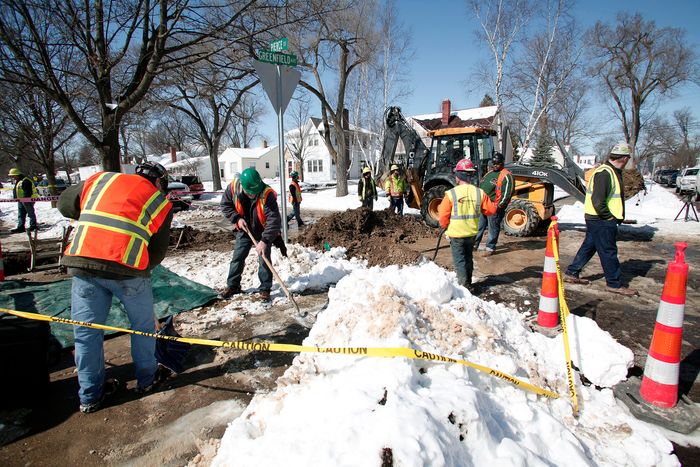
Last week former Michigan governor Rick Snyder was charged with two counts of willful negligence for his role in the Flint water crisis. It’s been a long road to this point: It was seven years ago that Snyder and several other officials moved Flint’s water source from Lake Huron to the nearby Flint River, contaminating the city’s water infrastructure with high levels of lead. It’s good to see that there’s a possibility of consequences for his mismanagement. But the big question still remains: Does Flint finally have clean water?
Almost. Since 2017, citywide lead levels have been within the range the federal government deems safe (though houses considered high risk do continue to show elevated levels). But nearly four years after a court order required the replacement of lead pipes in Flint’s water system, that work is only just now approaching completion. According to the City of Flint, 9,912 lead pipes (and galvanized-steel pipes that contain flakes of lead) had been removed and replaced as of December 25, 2020. That’s far fewer than the estimated 18,000 lead pipes in the city’s entire water system — but that number may include “homes that are not currently occupied, or are not having active water accounts,” according to Eric Schwartz, a professor at the University of Michigan who helped develop the predictive model the city has used to locate all of the lead. There may now be only a few hundred lead pipes that need to be replaced in order to fulfill the terms of the 2017 settlement that put the state on the hook for the $87 million undertaking.
The predictive model Schwartz developed with machine-learning expert Jacob Abernethy (the pair started a business called BlueConduit to extend their work to other cities) has had an 80 percent success rate finding lead. There are still somehow locations the city positively knows have lead pipes that have yet to be removed, and other locations that have a high probability of having them. But as Flint comes closer and closer to digging out that last in-use lead pipe, the excavations are focusing on less and less probable sites, where the pipes are more difficult to find, making for a slower finish to the race. And even when that last lead pipe is replaced, it’s an open question whether Flint residents, many of whom, out of justifiable suspicion, still rely almost exclusively on bottled water, will ever again trust their water supply.




